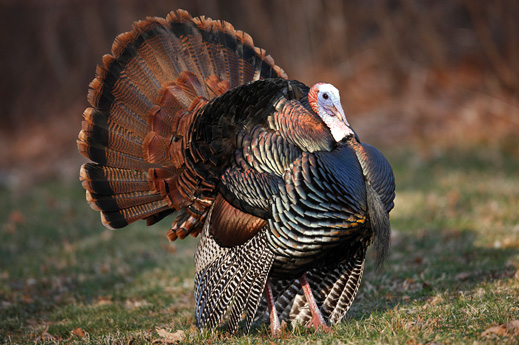Pass the Turkey Genome
When many Americans see that roasted turkey on Thanksgiving, it may appear as if the bird has already reached perfection. But genomic scientists are searching for ways to improve the domesticated turkey so that it grows faster, produces better quality meat, and can resist farmyard afflictions.

The turkey genome project, which began in 2008 and is headed by the University of Minnesota and the Virginia Polytechnic Institute, is putting together its final assembly of A’s, T’s, G’s, and C’s, and is already developing tools that will allow livestock breeders to select better birds. “With the genome sequence, we are able to measure traits that we can’t easily measure in a farm setting,” says Julie Long, a research physiologist with the U.S. Department of Agriculture Research Service in Beltsville, Maryland, and a member of the turkey genome project. For example, disease resistance and the efficiency with which a bird turns its food into muscle are difficult traits to measure. “It’s pretty easy to tell which birds are growing bigger and faster,” says Long, “but there are other traits that we can’t really measure.” And that’s where the turkey genome comes in.
Long and her collaborators are developing a DNA microarrary of thousands of positions in the turkey genome that are known to vary from bird to bird. Turkey breeders will be able to use this DNA microarray to determine which of the animals have exactly the right genetic makeup for breeding.
Researchers have already published the pig genome and have also developed a DNA microarray for genomic breeding of the animal. The idea, says Martien Groenen, a genome scientist at Wageningen University in the Netherlands and a lead author on the pork project, is that for the first couple of generations, breeders will measure a trait, such as meat quality or disease resistance, and at the same time track DNA variations with the DNA microarray to find those changes that link to that trait, he says. “Then, after a couple of generations, breeders can use the chip for genotype-based breeding rather than measuring the [trait] over and over again,” says Groenen.
Disease resistance is a particularly important trait because of its huge impact on animal health and welfare, says Kent Reed, a genome scientist at the College of Veterinary Medicine at the University of Minnesota and a member of the turkey genome project. “If you have healthier animals, then you don’t need as much interventions such as antibiotics,” says Reed.
In the future, some breeders may even turn to direct methods for changing animal genomes. A technology called genome editing allows researchers to change DNA bases at specific sites in the genome. The method is already making its way into experimental therapies for humans (see “Researchers Announce a Breakthrough on HIV/AIDS Treatment”), and researchers at Genus, an animal breeding company that specializes in cow and pig genetics, are exploring its use in pigs. In principle, the method should work in any animal, including our favorite holiday bird.
Keep Reading
Most Popular
Large language models can do jaw-dropping things. But nobody knows exactly why.
And that's a problem. Figuring it out is one of the biggest scientific puzzles of our time and a crucial step towards controlling more powerful future models.
The problem with plug-in hybrids? Their drivers.
Plug-in hybrids are often sold as a transition to EVs, but new data from Europe shows we’re still underestimating the emissions they produce.
Google DeepMind’s new generative model makes Super Mario–like games from scratch
Genie learns how to control games by watching hours and hours of video. It could help train next-gen robots too.
How scientists traced a mysterious covid case back to six toilets
When wastewater surveillance turns into a hunt for a single infected individual, the ethics get tricky.
Stay connected
Get the latest updates from
MIT Technology Review
Discover special offers, top stories, upcoming events, and more.